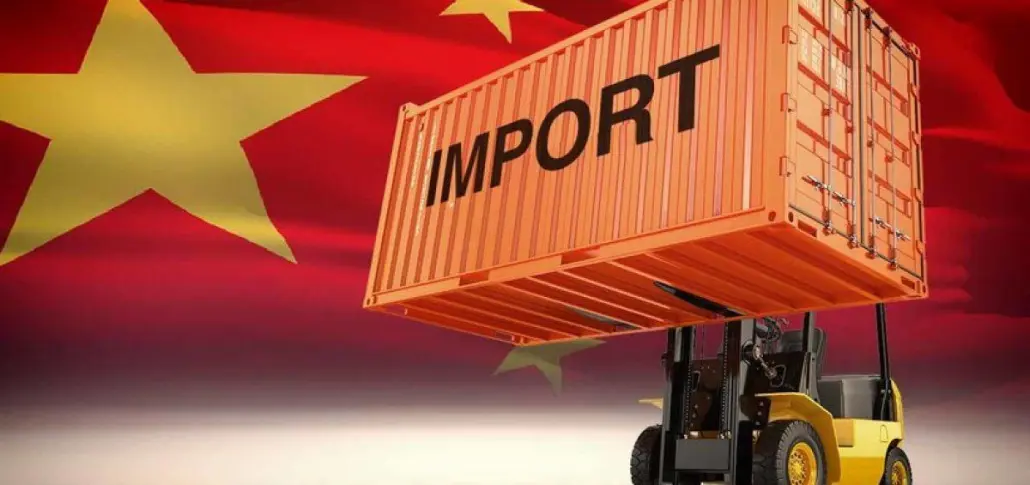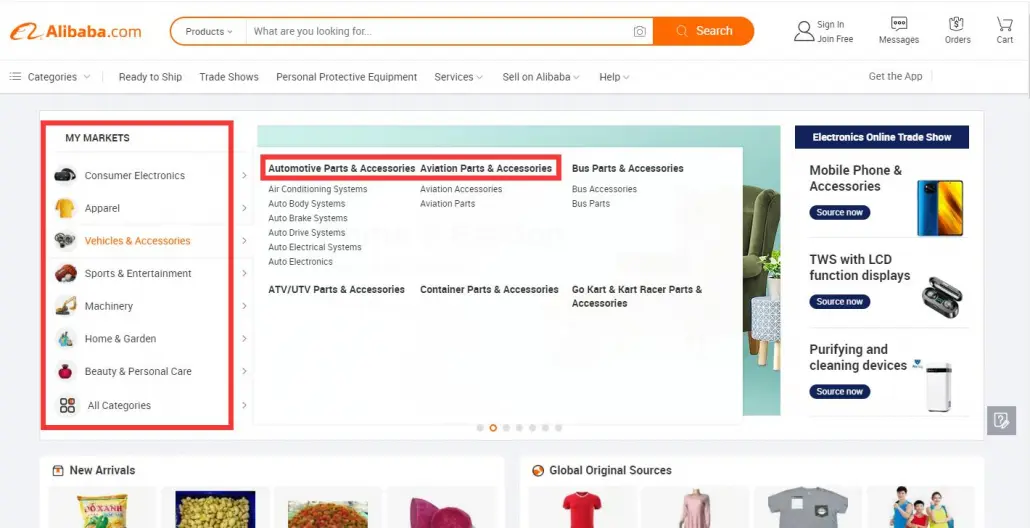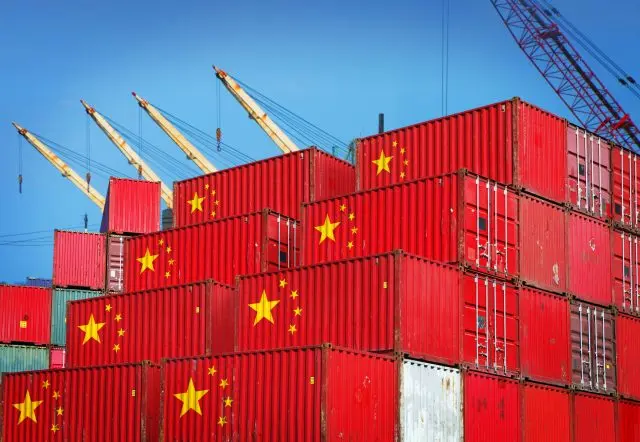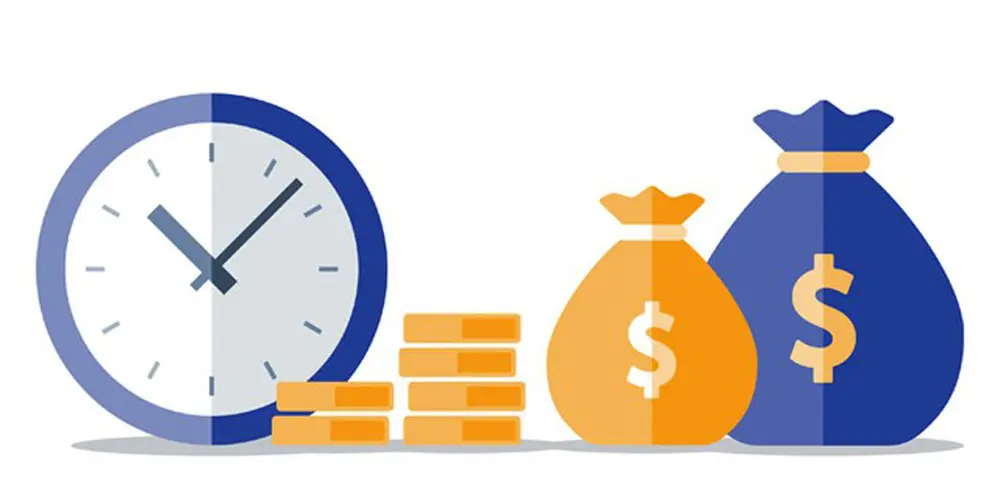How to get started for shipping from China to Denmark:

Handling international shipments is a complicated process. It involves coordinating not only the actual shipments but getting the items through Chinese and Danish customs while making sure your company follows all regulations and doesn’t violate any restrictions. This takes background knowledge, experience, and the ability to stay informed about changes in the industry. That’s why choosing the right freight forwarder for your company is essential. Before you’re ready to export goods from China to Denmark, it’s important to factor in the following:
- Both countries’ customs regulations
- Each country’s Import and export policies and restrictions
- Shipping documents
- Suitable modes of transportation for the goods being shipped
- The appropriate shipping routes used by the chosen mode of transportation
Finding a China-based carrier with good rates and that can effectively handle your shipping project will ensure your needs are met, both with regards to maximizing your company’s profit and maintaining the integrity of your inventory. Even though you won’t be handling this process yourself, it’s important to know a little about how the process works so you can work through logistics and potential pitfalls with your forwarder.
8 Steps for Importing from china to Denmark

Step 1: Check trade laws in China and Denmark
Make sure you’re aware of current regulations and restrictions when exporting from China and importing to Denmark. Both countries have different policies which can change often, so it’s important to stay informed. This is also the time in the process to find out what documents you’ll need to have ready for your goods to pass smoothly through customs.
Step 2: Decide what to import
You probably already have an idea of what merchandise your company is well-equipped to offer. From a business standpoint, it’s vital to make sure there will be a demand for your products in Denmark. Check what items currently sell well there. Research levels of demand for products so you know how much you should import and roughly how much it will cost you to produce, market, and deliver those goods to your customers. This is a business venture, after all – you want to make sure at the end of the day, you’re still able to turn a profit after factoring in expenses.
Step 3: Choose a shipping method
Before shipping your products you have to choose a shipping method. Shipping method depends on your types of merchandise. If you don’t know which shipping method is perfect for you then we will give you a good suggestions. Shipping methods vary depending on the weight and quantity of the products.
Step 4: Find a supplier
After you’ve decided what you want to offer your customers, an internet search can put you in touch with Chinese suppliers looking to sell just that. By developing a mutually-beneficial relationship with your suppliers, you can provide quality goods for your customers while creating beneficial business for yourself and your supplier.
Where can I find China Suppliers?

As we know, a good supplier is equal to a good client, so it is very important to find the right China supplier before we do business. Here are some methods for your search for the right suppliers from China as your business partners.
- A famous business-to-business website from China is a good place for you to choose suppliers.
- Famous business to clients’ website from China is the second place for you to choose China suppliers.
- Visiting different kinds of Chinese business fairs is a good method for getting in contact with suppliers directly.
- Your freight forwarder can help recommend good suppliers for you, as they are Chinese. As a high-quality freight forwarder, they should have many different cooperating suppliers already. For example, if you choose XCJD as your freight forwarder, we can help you as much as we can to get high-quality china manufactures.
- A Chinese sourcing company can help you to buy any goods directly from the suppliers if you don’t want to look for suppliers yourself. There are so many Chinese sourcing companies that do this job very well. It may be a better choice than buying directly from China. Click here to check the top 50 China Sourcing companies.(this listed at the middle of the linked article)
- You can search for suppliers directly on Google. You’ll find a wide variety of reliable Chinese suppliers for you to choose from.
If you find yourself struggling with price negotiations with your new-found supplier, contact us. We can talk you through the process and help you get the best price for your merchandise. It’s just one more way XCJD Logistics is here for you from beginning to end.
Step 5: Estimate your tax liability for importing goods from China to Denmark
Danish customs will apply a 25% value-added tax on their import. Other taxes and fees may apply depending on the type of items you’re shipping. It’s vital to stay well-informed about Chinese and Danish trade regulations so you know ahead of time what fees and taxes you should expect to pay. This will prevent unhappy and expensive surprises down the road. It will also help prevent you from running into unforeseen problems at Danish customs.
If you want to import from China but are unable to pay taxes, XCJD Logistics can help you solve this problem. Our door-to-door shipping services include customs clearance and taxes in our price quotes. And no matter what shipping method you choose, we can help you navigate tax information.
Step 6: Define your shipment’s Incoterms
If you’ve never shipped anything internationally before, you might not be familiar with the term “Incoterm.” Incoterms are internationally-recognized rules and terms that distribute responsibilities and liabilities between buyers and sellers when importing and exporting goods. They address who’s responsible for making payments on and monitoring shipments, obtaining insurance, preparing shipping and customs documents, and other shipping-related tasks. They’re industry-standard, so they’re important to be familiar with. Make sure you familiarize yourself with these and define your shipping’s Incoterms before moving forward.
Step 7: Customs clearance from China to Denmark
Basically, one of the most necessary processes in customs that is done by the owner of the products or its legal representative is called clearance of goods. The terms customs, which is used for importing and exporting a goods during a customs. Stages of customs clearance are expressed in the below:
- Entering information for the system
- Printing and declaration
- Assessing the goods
- Obtaining the necessary permits
- Paying the cost
- Going to the warehousing
- Exit of goods
Step 8: Hire a freight forwarder

Top Danish imports
Denmark already imports a variety of goods from around the world. Reviewing their current top imports is a great starting place when determining what your company can offer.
Machinery including computer
Electrical machinery, equipment
Vehicles
Mineral fuel
Pharmaceuticals
Plastic and plastic articles
Optical, technical, medical apparatus
Clothing and accessories
Articles of iron or steel
Furniture, bedding, lighting, signs, prefabricated buildings.
Knowing what already has an existing market and demand in Denmark can give you a good idea of what you might be suited to provide for your prospective customers.
If you’re unsure where to start, check Alibaba.com. Alibaba is a Chinese business-to-business website that helps companies find merchandise to sell in other countries. Here’s just a handful of the types of items you can find on Alibaba.com to import to Denmark:
Men’s clothing
All-terrain vehicles (ATVs)
Cell phone cases
Professional gaming headsets
Baby food
Pre-packaged snack foods
Leather
Jewelery
Scarves and shawls
Wristwatches
Bus parts and accessories
Luggage and travel bags
Self-defense supplies
CCTV cameras
Water treatment supplies and appliances
Cables for electronics
Batteries
Musical instruments
Souvenirs
Fireproofing materials
Now is also the time to determine whether any items you’re considering importing are prohibited or restricted by the Danish government. If they are, delve into the current regulations that apply to those specific items. The last thing you want is to realize your cargo isn’t allowed into the country and you have to figure out what to do with a container-load of inventory.
Examples of prohibited items for import into Denmark:

example sign. example square speech bubble. example
- Asbestos fibers
- Red tuna fish
- Chemicals
- Cotton
- Cotton seeds
- Grain samples
- Drugs
- Plants and plants products
- Seeds
- Soil samples
- Rockets sprouts
- Personal effect
- Fire extinguisher
Example of restricted items imports into Denmark
- Food products containing meat or milk products for personal consumption.
- Furs
- Psychotropic
Keep in mind that this list isn’t exhaustive and can change often, so check current regulations every time you decide to ship a new type of item to Denmark.
Shipping Methods from China to Denmark:

We can provide cost estimates and explain the pros and cons of each shipping method in your specific situation. However, it’s best to have some background knowledge of these methods beforehand as well.
The main options are express shipping by courier service, airfreight, train railway freight, and sea freight. In this section, we’ll provide a quick overview of how each method works as well as their respective strengths and weaknesses.
Express Shipping freight From China to Denmark:
This is the fastest option to ship goods to Denmark. With Express shipping, your merchandise can reach its destination within 3-5 business days. With Express shipping courier services see your packages from door-to-door – that is, from your supplier factory to the items’ end destination.
A variety of well-known carriers offer these services, such as UPS, TNT, FedEx, and EMS. They all have good reputations for reliability, so you can rest easy knowing your items are quickly making their way to their destination. These carriers use a variety of methods (airfreight, sea freight, and train railway freight, which we’ll go into in greater depth later) to provide a hands-off, worry-free service. They can pick up your inventory at your door (or factory) and see it to a designated address, whether that be the warehouse in Denmark or directly to your Danish customers.
Door-to-door express shipping handles items of all sizes and weights. Light items are generally air-freighted for speed and heavy items are sea-freighted, which involves a longer ship time. But since they come directly to your door, they are the most convenient option.
Upsides to express shipping: A fast, worry-free experience for you
Downsides to express shipping: More expensive than alternatives
Airfreight from China to Denmark:

The biggest advantage of airfreight is its speed. Items leaving China can arrive in Denmark within 8-10 days. This is optimal for high-value items since they spend less time in transit. However, there are a few trade-offs for that speed.
Airfreight is generally more expensive than rail or sea. It’s also better for small items because airlines have weight and volume restrictions. Airfreight also uses more fuel than alternatives, so if carbon footprint is a concern for you and your company ethic, you’ll want to opt for sea or rail freight.
Keep in mind that airfreight normally only involves delivering goods to an airport in Denmark, not to the inventory’s ultimate destination. Additional transportation accommodations must be made to get your shipment to its final destination. The exception, of course, is if you’ve arranged for door-to-door transportation. As discussed above, door-to-door delivery allows arrangements to be made to transport the goods from the airport to their end destination, as well as clearance through Danish customs.
Airfreight is split into two categories: general cargo and special cargo. As the name suggests, most items are considered general cargo.
Examples of general cargo:
Electronics
Jewelry
Pharmaceuticals
Personal accessories like watches, purses, etc.
Special cargo is subject to different regulations than general cargo, which can involve additional inspections.
Examples of special cargo:
Fragile items
Dangerous items, like certain chemicals
Items that need to be temperature-controlled, such as seafood
What is fragile items?
Fragile items includes anything that can be easily broken, from glassware to antiques and more. These delicate items can be made of any material, including crystal and ceramic, and need extra attention before shipping. XCJD logistics provide a security over your fragile items.
Remember, some airlines have restrictions that prevent them from handling special cargo. When obtaining an estimate, make sure you mention any items that might fit into this category. The type of items you’re shipping can impact what airlines (and which airport destinations) your items can travel through. This, in turn, can affect the price you end up paying.
Top International Freight Airlines from China to Denmark:

Federal Express
UPS
British air cargo
Qatar airways cargo
China Airlines
Asiana Airlines
All Nippon Airways
Top Chinese airports for exports to Denmark:
Beijing Capital International Airport
Chengdu Shuangliu International Airport
Shanghai Hongqiao International Airport
Shanghai Pudong International Airport
Xi’an Xianyang International Airport
Guangzhou Baiyun International Airport
Hong Kong International Airport
Kunming Changshui International Airport
Shenzhen Baoan International Airport
Hangzhou Xiaoshan International Airport
Danish international airports for imports:
Copenhagen airport
Billund airport
Alaborg airport
Aarhus airport
Vagar airport
Upsides to airfreight: Fast
Downsides to airfreight: Expensive, high carbon footprint, constraints on what type of items can be shipped via air
Train Railway Freight from China to Denmark:

Train railway freight is the happy medium between sea freight and airfreight. Generally, railway freight is about half the price of airfreight, but about 40% faster than sea freight, mitigating the main drawbacks of both. Using a method quicker than sea freight allows you to keep less inventory on hand in Denmark since you can ship smaller batches more frequently. This also allows you to tailor your inventory to your clients’ changing needs by making smaller, quicker, more frequent shipments.
This method is versatile; it can ship pallets, cartons, crates, controlled-temperature items, frozen and fresh food, pharmaceuticals, and other items that require special care and handling. Railway freight can also handle a large variety of products, both small and large.
However, there are limitations to railway freight. High-value and dangerous items can’t be shipped by railway freight, so you’ll need to look into other options if those terms apply to your merchandise.
Train railway freight is split into two types: Full Container Load (FCL) and Less-than-Container Load (LCL).
Full Container Load (FCL): These are shipments where all the items in a container are owned by a single company. This is a good option when you’re shipping enough volume that you can fill an entire container by yourself. This is suitable for bulk items and large-volume products. It’s the most cost-effective option of all, provided you’re filling the entire container.
Less-than-Container Load (LCL): Multiple shippers’ items are packed together into a single container. This is the way to go when you’re shipping in quantities too small to fill an entire container. This allows for smaller, more adaptable inventory.
FCL or LCL which one is cheaper

FCL is cheaper than LCL because instead of paying for each C.B.M (cubic meter), you to pay for each container. The whole cargo belongs to a customer, and it has a customs license. The review is for one case only.
Why one choose LCL?
You may be wondering why anyone would choose LCL if FCL is the cheaper option. With FCL, you pay for the entire container. If your shipment is too small to fill the container, it can be more cost-effective to opt for LCL, where you’re only paying for the space your items take up.
Railway train freight from China to Denmark
We can arrange railway train freight from China to Denmark, if you need us to pay the taxes, and help to do the import taxes, then we will have train freight shipping methods including taxes and customs clearance for your reference. You need only wait for the cartons to arrive from your China suppliers after you pay the shipping cost. All the steps of handling shipping from China to Denmark we will help to do for you. If you want to use your tax account for railway shipping, we can work with you using that method as well.
Items that can’t be shipped by railway freight:
Liquids
Powders
Knives
Weapons
Other hazardous items
Main railway freight routes that run from China to Europe:
Wuhan-Europe
Chongqing-Europe
Suzhou-Europe
Zhengzhou-Europe
Yiwe-Europe
Upsides to train railway freight: Faster than sea freight and less expensive than air freight, making it a great middle-ground between the two. Train railway can handle a wide variety of items, both in terms of item type and in size and weight. The FCL and LCL system allows you to choose the option that works best for you.
Downsides to train railway freight: There are some limitations regarding what items can be shipped via train railway. Also, since it’s a middle-ground between the speed of airfreight and the low cost of sea freight, if speed or low cost is your highest priority. It’s unlikely railway freight will be the best choice for you.
Sea Freight shipping service from China to Denmark:

Sea freight is the most common method of shipping items from China to Denmark, mainly because of its versatility and reliability. While rail and airfreight have constraints on what items they can carry, practically everything can be shipped by sea, including very large and heavy items (like cars). The main downside to sea freight is its timeline. While other shipping methods deliver cargo in a matter of days, sea freight takes weeks. Items usually take between 35-45 days to reach their destination, depending on the type of freight and the specific ports of departure and arrival.
Sea freight operates under the same FCL and LCL container system as train railway freight. Consider container sizes when choosing shipment sizes and when obtaining a price estimate, since prices for FCL and LCL are different. We can help to make commercial invoice, customs clearance and buy insurance for your shipment.
Top Chinese seaports for exports to Denmark:
Shanghai
Shenzhen
Ningbo-Zhoushan
Guangzhou
Qingdao
Tianjin
Main Danish seaports:
Port of Frederica
Port of Aarhus
Port of Copenhagen
Port of Esbjerg
Port of Aalborg
Port of Odense
Port of Aabenraa
Port of Grenaa
Upsides to sea freight: Inexpensive, lower carbon footprint than airfreight, can handle all items, FCL and LCL system lets you adapt to your business’s needs
Downsides to sea freight: Slow
Special shipping service from us

We are providing some special service for shipping your merchandise. Our port-to-port, door-to-port and, door-to-door service helps you to find best way of shipping. If you don’t know about these services then we will help to learn.
Port-to-port
In ocean freight, port-to-port shipping involves the middle leg of the entire shipping process. Under this, the transportation of merchandise in shipping containers from the port of origin to the port of destination. It doesn’t include pre-carriage and on- carriage transportation service. Given the volatile and precarious situation shipping lines are often faced with at sea, there lies a certain unpredictability in this portion of shipping process. This is largely why this trends to be the most expensive part of the shipping process.
Door-to-port
Door-to-port service in an efficient and cost-effective way of shipping goods internationally. This process beings when goods are picked up from your door(Home or supplier factory), then you are responsible for the foreign customs formalities process and for arranging delivery of the goods to your final destination. We will notify you prior to cargo arrival to the port of destination and refer you to one of our customs brokers to help clear customs and process required paperwork.
Door- to-door shipping
Door-to-door shipping is a service where the freight forwarder guarantees that the goods will be picked up from and delivered to the destination decided by the customer. We will pick up the shipping container from your warehouse and bring it to the port gate.no matter which type of delivery you chose, it is important to know what all of your options are before shipping. It is different from door-to-port or port-to-port because it begins and ends at specific address within cities covered by the freight forwarder.
Comparing Shipping Methods at a Glance:
Shipping Cost from China to Denmark:
| Express | High |
| Air Freight | High |
| Rail Freight | Medium |
| Sea Freight | Low |
How can be cost calculated?

The rates for shipping air freight or cargo in a container from China to Denmark are dependent on several factors. XCJD freight forwarder will usually take the following aspect into consideration before shipping your merchandise:
- Nature of goods
- Chosen mode of transfer
- Weight of cargo
- Dimensions of cargo
- Distance between origin and recipient
- Types of service
Busy times for Chinese exports are January (Chinese New Year) and the third quarter of the year (July-September). The latter is due to increased demand in anticipation of end-of-the-year holidays.
Keep in mind that quotes for FCL shipping are usually stable for up to 2 weeks, while LCL rates last up to a month. This is why it’s so important to 1) obtain a quote specific to each shipment, and 2) act quickly to place your shipment order after receiving a quote.
Shipping Time from China to Denmark:
| Express | 3-5 days |
| Air Freight | 8-10 days |
| Rail Freight | 20-25 days |
| Sea Freight | 35-45 days |
How to find the cheapest way to ship?
Minimizing cost is one of the areas you need to focus on when shipping. Remember, as an importer; you need to maximize your profits while reducing costs. One of the way you can do that it by finding the cheapest way. There are many ways you can cheaply ship your cargo from China to Denmark. Here are some of the ways you can safely find a cheap way to ship your cargo from China to Denmark.
Identify the product to import
You need to identify the product that you want to import from China to Denmark. Going to China with a clear head of what you are importing can help save your shipping cost. You won’t have to choose what to import randomly. Also it will help you to identify the budget you are going to use.
Negotiation with different suppliers
For you to have an edge when it comes to importation, you have to engage the different suppliers available. This will help you find a favourable deal for your importation. Some of the areas that you can negotiate on include price, quantity to supply and even the production time.
Negotiate with several carriers
Ultimately, you will have to ship your cargo from China to Denmark. As such you need to look for a carrier that will ship your cargo at favourable rates. You can negotiate on the cost of shipping an even number of tips it makes to your destination.
Use your forwarder packaging material

One of the ways you may end up paying a higher price for your shipping is by using your packaging materials. Some of the materials might add weight to your cargo which will increase your shipping cost. Remember that weight is a crucial determinant when it comes to calculating your shipping cost. Minimize this by using the packaging materials provide by your forwarder which are typically the standard ones.
The season of shipping
You will pay higher if you chose to ship during the pack season. During such times, there are a lot of activities taking place with many importers importing which increases the pricing. Not only you will pay higher but you will also have limited space meaning that your cargo may be damage. Minimize this by shipping during low season when there are fewer activities. You will able to ship at a lower price at the same time have a lot of space for your shipment.
Documents to prepare when shipping from China to Denmark

- Single Administrative Document. This is the declaration document that you write to customs.
- Bill of lading, also known as an air waybill, sea waybill, or courier waybill. This is required for every shipment and serves as a contract between you and the carrier.
- Entry summary declaration
- Certificates of Origin
- CMR
- Packing list
- CIM consignment note
- Certificate of shipment
- Invoice
Not all of these are necessary in every case, and document requirements vary based on the shipping method. Staying well-informed about current regulations and consulting with your freight forwarder will help ensure you always have the proper documentation prepared for your shipment.
If you’re not sure what documents you need or feel lost when preparing your documents, contact us. We offer help preparing commercial invoices as well as import and export customs clearances for each shipment.
Why Choose Cargo17.com
- Free charge to pick up goods from supplier factory.
- Free charge for warehousing your cartons if goods not rush to send out to the destination.
- Pick-up goods from different suppliers, and send out together to help save shipping cost.
- Free charge in repacking cartons from suppliers.
- Free charge to help take pictures of goods from suppliers.
- Free charge to help checking goods package and appearance before sending out goods.
- We can help to make commercial invoice if you don’t have time to make CI.
- We can help to do the export customs clearance for each of your shipment.
- We can help to do the import customs clearance for each of your shipment.
- We can help to buy insurance for your shipment
- We can help to make certificate for your shipments
- We can be reached 24/7
- Shipment: Large enough to handle, small enough to care. Our goal is to tailor shipping solution for different kinds of clients
- Whatever you want to move, where ever they need to go, we can meet the challenge.
- We also can help you to negotiate price with your supplier if need our help.
- We can help to check what on earth your China Supplier if needed.
- If you want to buy from china, but don’t know how to do, we can teach you step by step or introduce sourcing company products.
- Our price is super reasonable.
- We treat this job more important than ourselves.
- We have office in ShenZhen, GuangZhou, ShangHai, ZheJiang. No matter where your suppliers located, we can pick up goods within China Mainland within 3hours after getting your pick up authorization.
- We can make most suitable shipping offer for each of your shipment depends on our shipping experience and your shipping requirement. Matter how unorthodox the shipment, we’ll do whatever it takes to fit your needs.
